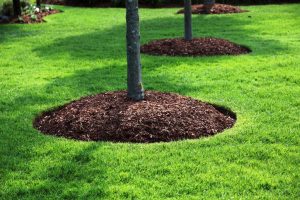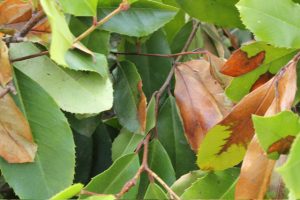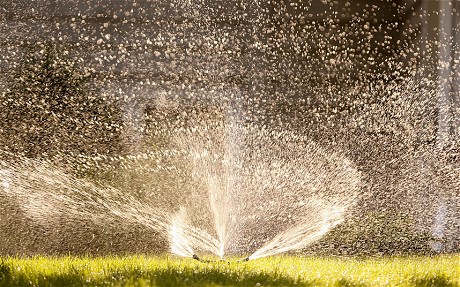With the serious prospect of a heat wave on the horizon, anxiety is beginning to creep in, How do you stop your garden from dropping dead in the heat?!
First, let’s not forget that we started this late-arriving spring/summer with more-than- adequate water already in the soil (thanks to all the rain and snow) and if we applied moisture-retaining mulches early in the spring, as we are all supposed to do, they should be doing just that. Even so, some trees and plants are showing signs of stress, so the following list of priorities may be helpful.
 WATER: The effective way to help your trees survive the heat is by watering them more, both in the amount and frequency.
WATER: The effective way to help your trees survive the heat is by watering them more, both in the amount and frequency.
Heatwaves and hot seasons often dry the soil out, reducing the water content in the soil and increasing its temperature. Prevent this (or at least minimise the effects) by watering the soil of your trees and plants generously. You can start by watering them more than you usually do, especially when you notice the soil getting dry. Just remember not to overdo it – watering too much can also cause problems.
It’s best to water your trees and plants when the sun isn’t out in its full force, which is typically early in the morning or later in the evening. Also, remember to prioritise young trees and small shrubs and plant life, as these plants are usually less capable of withstanding extreme heat. Larger, more mature trees may require less extra watering because their root systems are already well-established.
And don’t forget to take extra care of trees and plants that are out and exposed to the sun all day. These plants will need more watering that those that are in shaded areas.
 MULCH: After watering, mulching is perhaps the next best thing that you can do to protect your plant life from intense heat.
MULCH: After watering, mulching is perhaps the next best thing that you can do to protect your plant life from intense heat.
Mulch helps insulate the soil and prevent your trees and plants temperature from rising too high during heatwaves and hotter seasons. Mulch also helps your trees and plants retain moisture in their roots, helping them withstand the effects of the dry and sweltering heat.
For these purposes, we recommend using organic mulch, which will break down slower than inorganic mulch and even provide extra nutrients to the soil.
SHADE: If you have young trees and plants that are exposed to the sun all day, then you may find it helpful to put some shade on them. This will help prevent them from drying out and getting damaged from the intense heat of the sun. A good way to do this is to create canopies with screens or shade cloths that effectively block the sun.
Creating shade is especially useful for sun-sensitive plants and young trees, which are often more fragile and less resistant to the scorching sun.
WARNING SIGNS: It can sometimes be difficult to tell whether your plants and trees are getting overly stressed by a heatwave or a particularly hot season. But if you keep an eye out for some warning signs, then you can help them survive before it becomes too late. Here are some of the warning signs you should watch out for:
 Dry, browning leaves
Dry, browning leaves- Dry, hard soil
- Falling branches
- Falling leaves.
When caring for your plants and trees during heatwaves, a little extra care and attention can do a lot. Not only will this help your plant life survive the intense heat and dry conditions of these seasons, but a little extra care will also help you address any issues before they become even bigger problems.
Remember that your trees and plants are valuable to your property. It would be a shame to have them damaged – or worse, die – because you neglected them during these periods. By doing any of the above, you can help your plants and trees withstand the high temperatures we can expect to come every year.
The rest of the Garden:
Plants in containers are most vulnerable, especially small ones containing annuals. Group them together in the shade. When the weather returns to normal, kick-start a fresh performance with a “haircut” and a feed.
Soft fruit should be high on your list of priorities, and also vegetable crops that need water in order to swell – courgettes, tomatoes, potatoes, onions etc.


Recent Comments